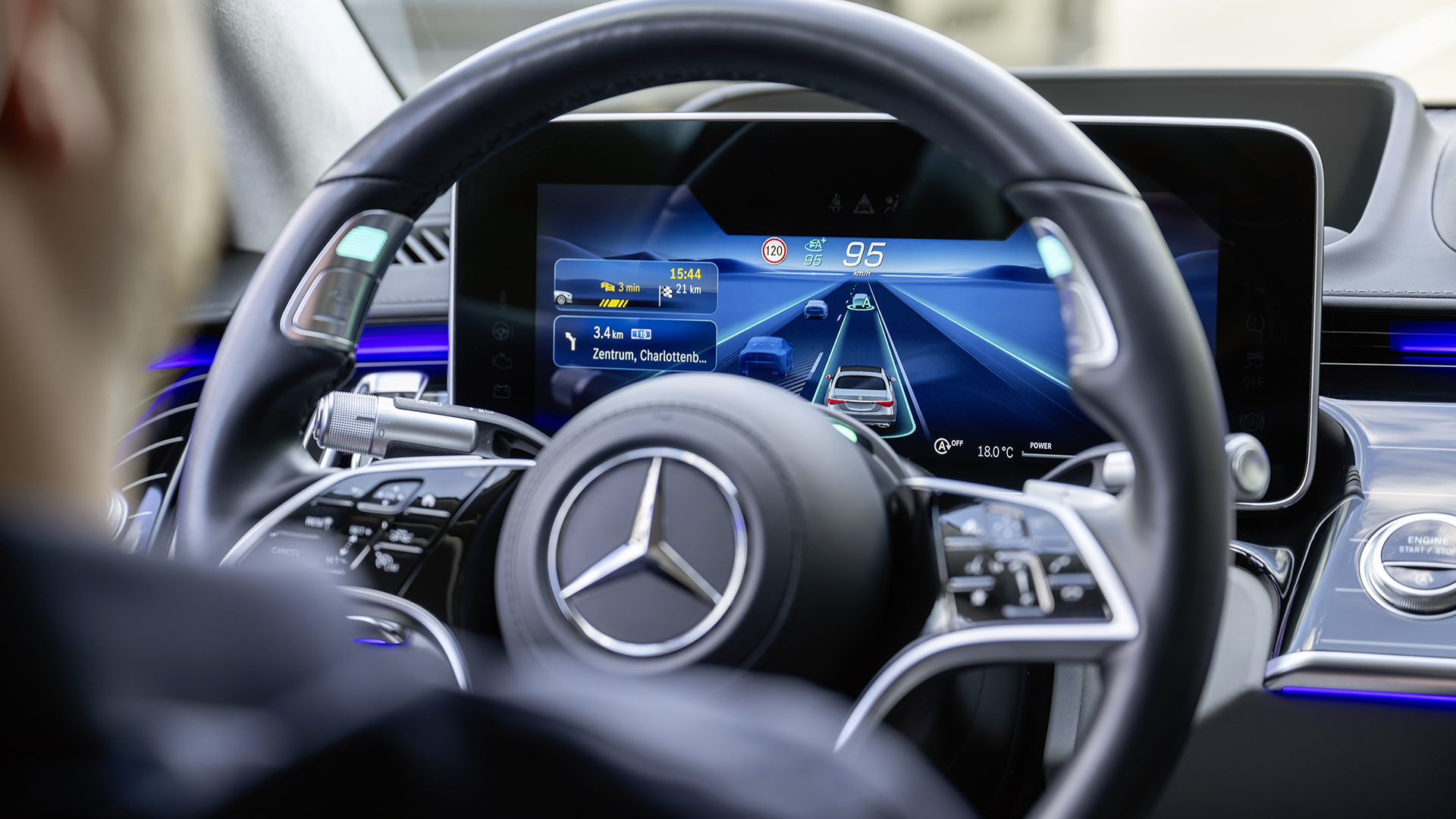
Level 3 autonomous driving is a big step up from level 2. While level 2 gives you acceleration and braking control with steering assistance, most require you to keep your hands on the wheel, and all require your eyes to stay firmly on the road. Drive Pilot – the name of the Mercedes-Benz level 3 system – is different. It allows you to take your hands off the wheel and your eyes fully off the road, leaving the car in control, and you free to watch other things.
Available for the Mercedes EQS and the Mercedes S-Class, the first version of Drive Pilot launched two years ago but was limited to 60 km/h (or 40mph in the US). This meant that it was only really deployable in heavy or slow moving traffic. The biggest restriction on this speed has always been regulation and now with the new version, Mercedes expect to get full approval for 95 km/h (59 mph) in Germany by the end of the year.
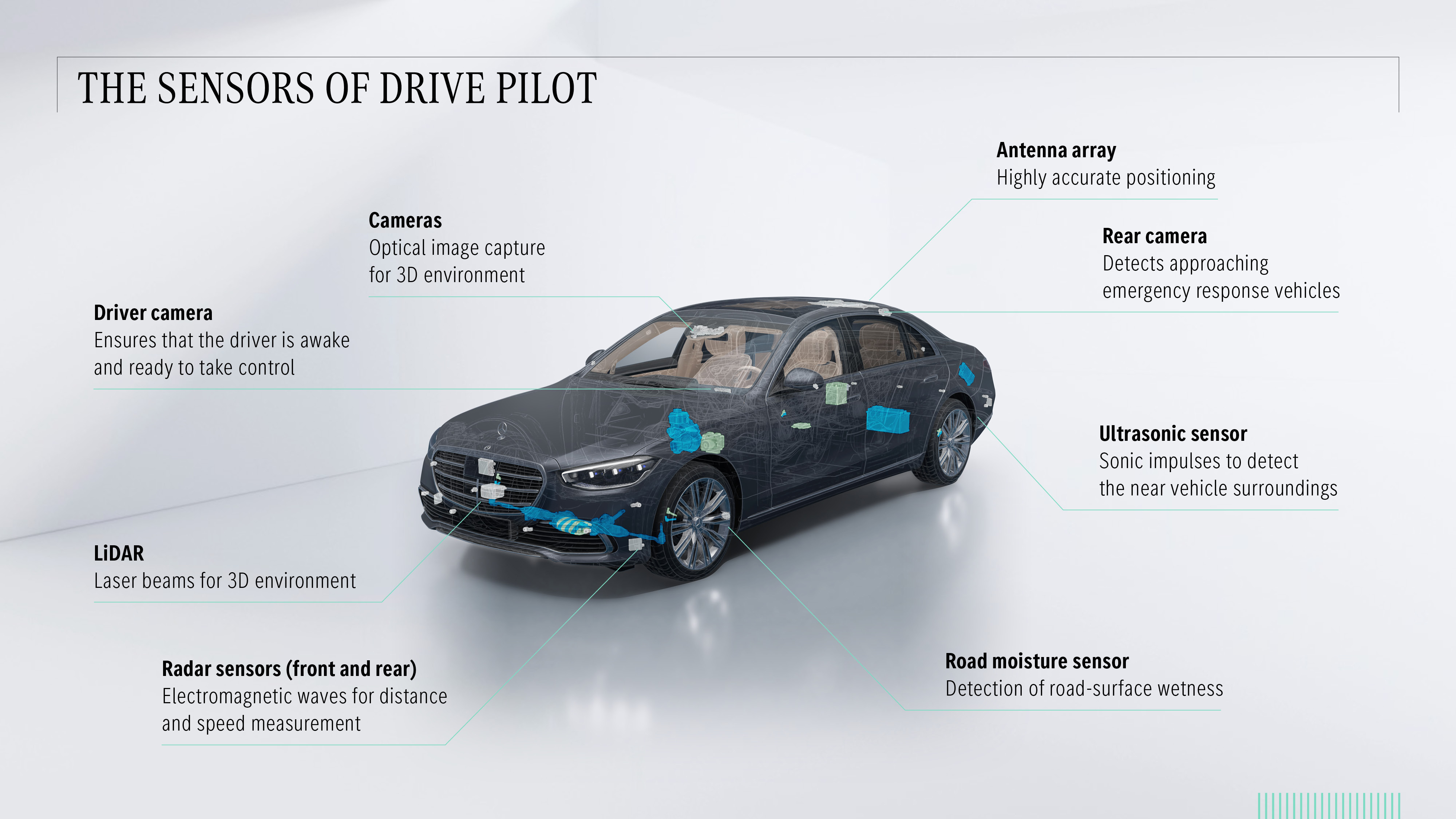
New hardware
The changes to the system are more than just about the speed though. The original system relied on a combination of cameras, ultrasonic sensors and radar to position the vehicle. The new version comes with new LiDAr sensors, road moisture sensors to detect the condition of the road surface, interior microphones to listen for emergency vehicle sirens, a new rear camera and a new GPS aerial.
There are also new marker lights on the outside of the car that light up in turquoise when the Drive Pilot system is active. This is to alert other drivers – and importantly any traffic enforcement – that the vehicle is in charge of the driving.
That said, the ability to reach these new higher speeds will also be rolled out to existing Drive Pilot users over the air. There’s also an addition to the level 2 system rolling out to existing customers Europe-wde. This is an automatic lane change function which is a sutble but useful change from the current system. Rather than requiring the driver to indicate to get the car to change lane, the car will automatically determine if a lane change is needed and will start the process itself. The driver is able to override this through the steering wheel movement, pressing the cancel button or indicating the other way.
Drive Pilot is now also able to move the car out of its set lane in the case of an emergency vehicle behind needing to get past. This creates a much wider emergency corridor for vehicles without the driver having to manually take control.
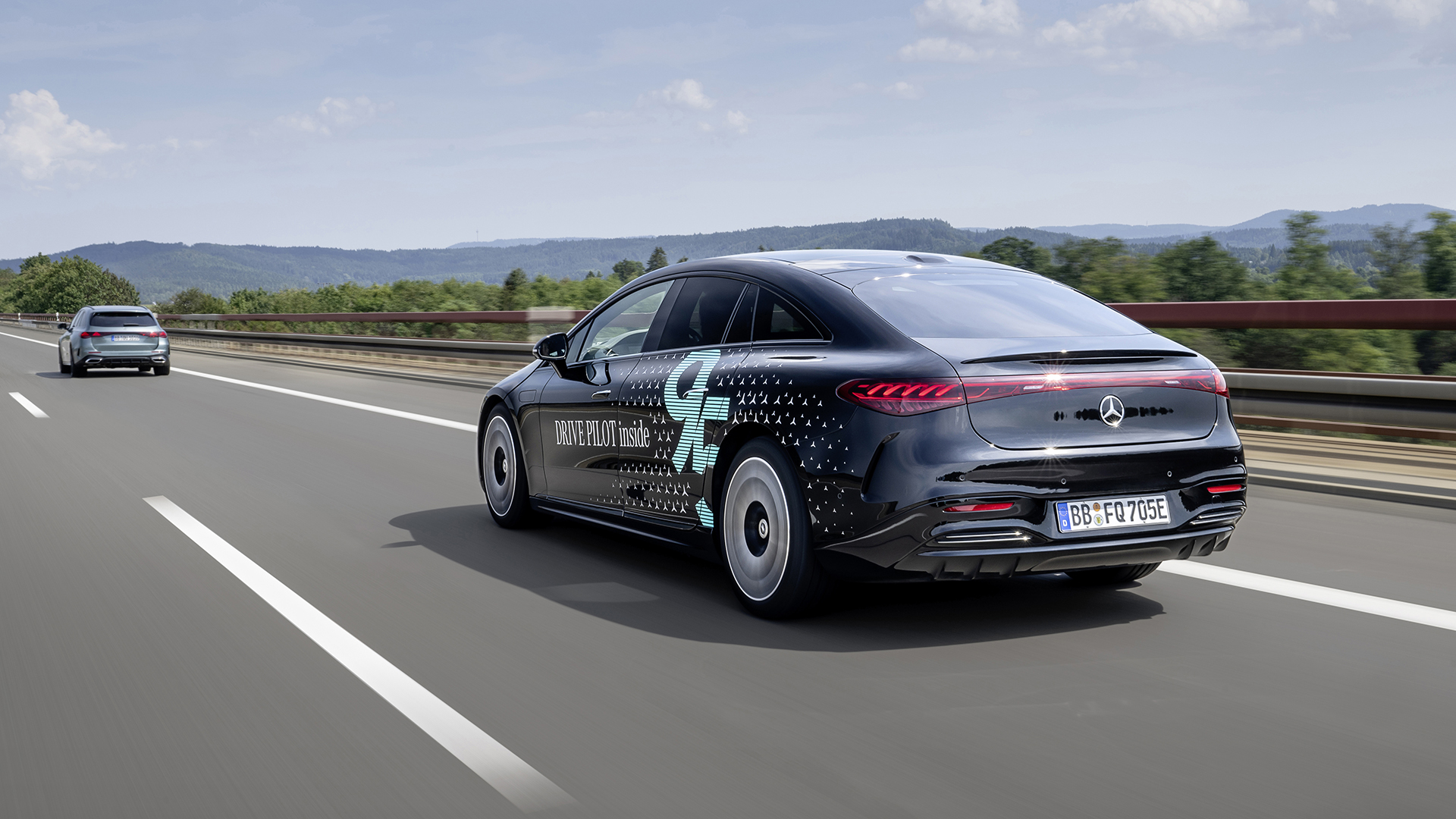
On the road test
I tried the new Drive Pilot system for myself on a preset route around Berlin to see how it performed. To initiate the new system there are dedicated buttons on the steering wheel, placed at your thumb position, if you hold the wheel properly at ten and two – which most people don’t. These buttons light up in white when the system is available, along with an icon on the driver display.
You can activate Drive Pilot from manual driving or from the level 2 assisted driving setting – which has a separate set of controls on the steering wheel. Activation takes a couple of seconds from pressing the button, but the button lights then glow turquoise, like the ones on the outside of the car.
The controls in the level 3 drive pilot system have far less room for adjustment than the level 2 system. You have to be in the right-hand lane (for right-hand drive countries) and you can’t override the maximum speed of the road at any time. That means if you’re in an 80kmh zone, you can only do a maximum of 80kmh, and you can’t adjust the distance from the car in front as you can on regular adaptive cruise control systems.
Another condition of Drive Pilot is that you must be following a car that is doing 95kmh or under at all times. Without a car in front, the Drive Pilot will disengage, putting you back into manual driving control. This is presumably because the system is using the other vehicle's movements as an additional fail-safe. In fact, there are fail-safes built into most parts of the Drive Pilot system, including the steering, braking and electrical system, as Mercedes knows when the car is in control, there’s no room for error.
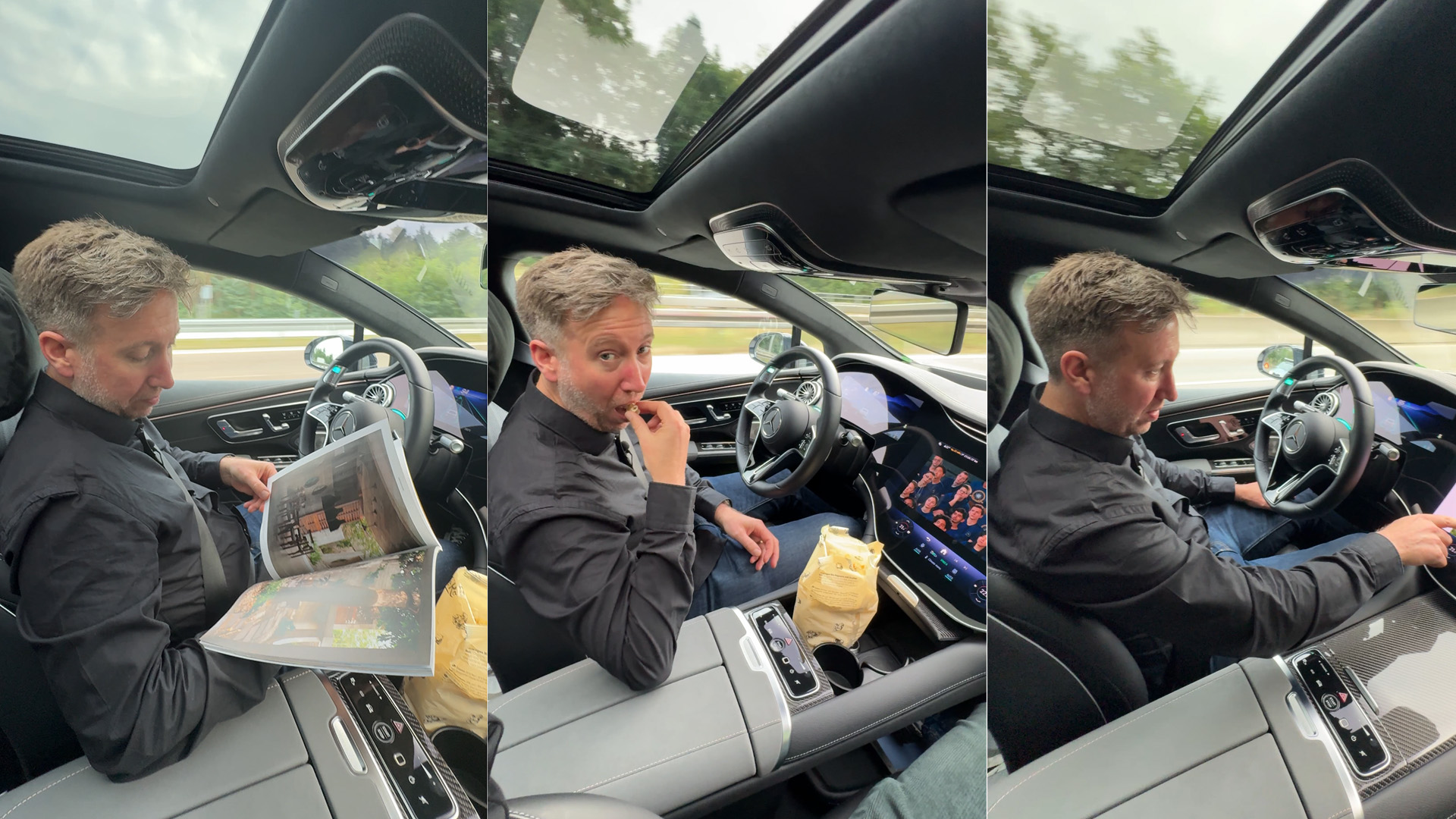
Just sit back and relax
I was surprised at how quickly I accepted the car was in control and took my eyes off the road once into Drive Pilot mode – even at full speed. The car felt completely stable and instantly put me at ease. I was then free to explore the Mercedes entertainment system.
You can watch films or TV channels using the apps in the MBUX system, which look stunning on the Hyperscreen display of the EQS. There are also games, an internet browser and productivity functions, should you want to work on the move.
The only restrictions of the Drive Pilot system for the driver is that they must remain awake and the car is constantly monitoring your eyes while in the autonomous drive mode. For that same reason, you can’t block the view of your face to the sensors with a book or phone.
Mercedes recommends that you don’t put anything between you and the airbag, in case of a crash. However, you could read a book or browse your phone, if held to the side. In Germany it’s not illegal to hold your phone while driving anyway, so this isn’t as extreme as it might sound in the UK.
During my drive I watched parts of one of the Spiderman films, played Tetris, browsed the latest news on t3.com and flicked through a copy of the latest Mercedes magazine. When the lights on the steering wheel turned orange, I knew the Drive Pilot control was ending, and when it turned red, I had to take over.
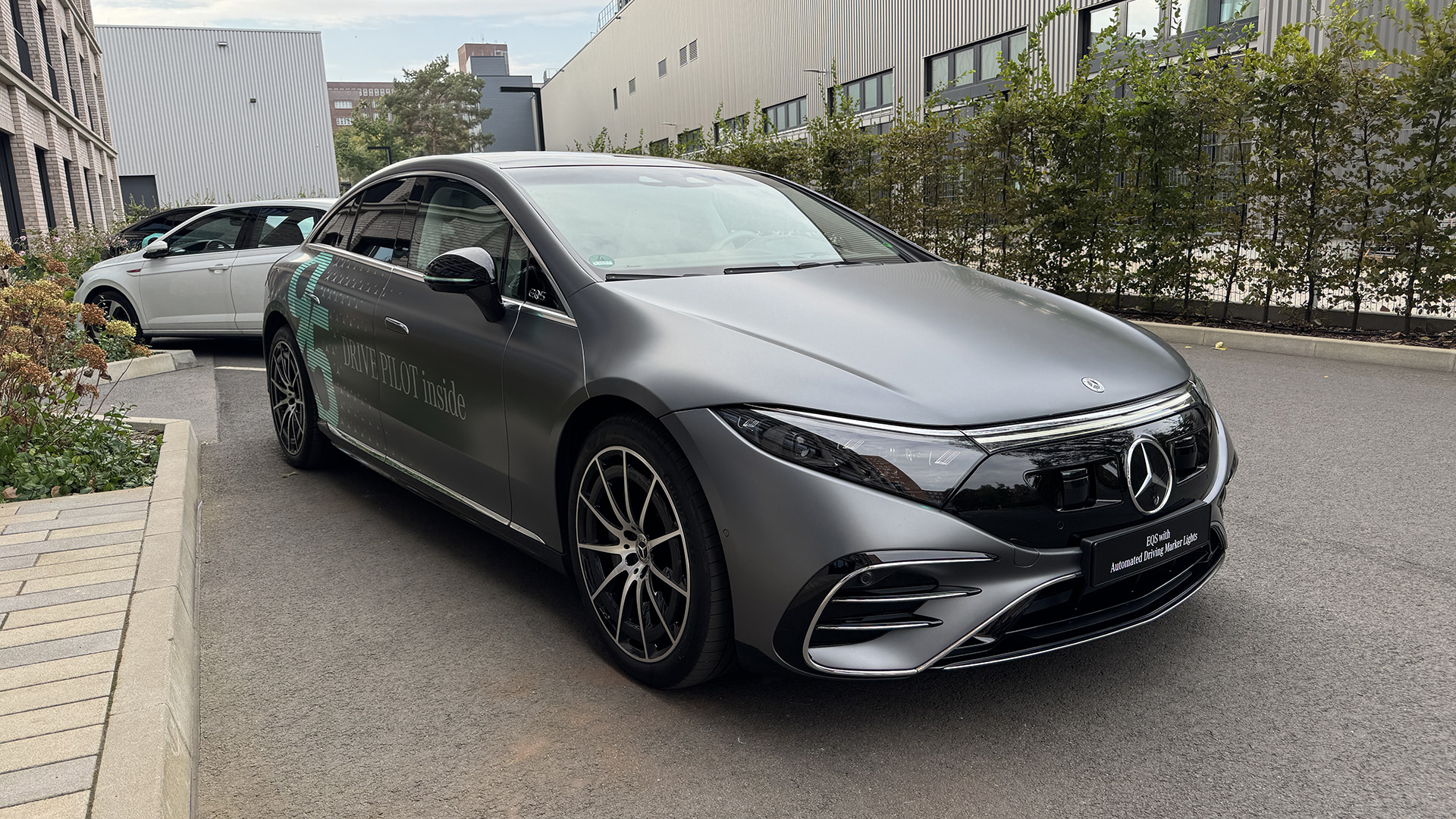
The future of autonomous driving
The roadmap for Drive Pilot is still for faster speeds, bringing it up to 130 km/h – the maximum for all but the derestricted autobahn sections in Germany. There’s also plans to roll out the system in more European countries, and presumably these faster speeds will also come to American states that already have Drive Pilot regulation (such as California and Nevada).
I suspect the system will get cleverer too. Right now it needs that vehicle to follow and requires both the visual route and the HD map data to match precisely. Eventually, I imagine the system will allow it to deal with unmapped changes to the road, such as roadworks, and to continue without a vehicle to follow.
This new upgrade to 95kmh is a bigger step than it sounds for daily drives, and does mean you will be able to use it for a lot more of your commute – if you live in Germany that is, and have a new Mercedes EQS or S-Class. I expect we will also see this tech on the upcoming C-Class electric models later this year, which will open the programme up exponentially. Personally, I can’t wait to see this roll out further and transform those long boring drives.







